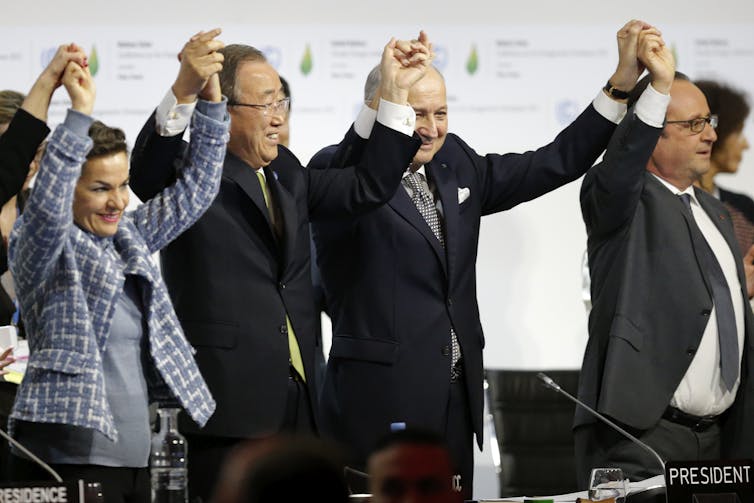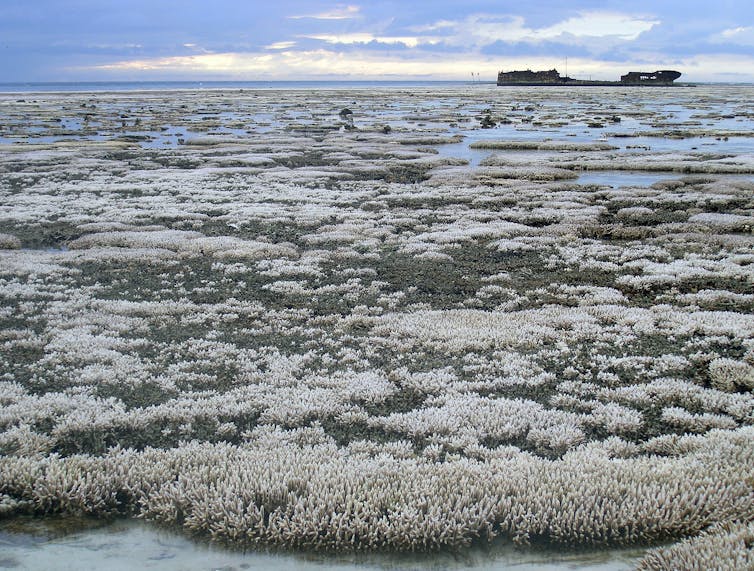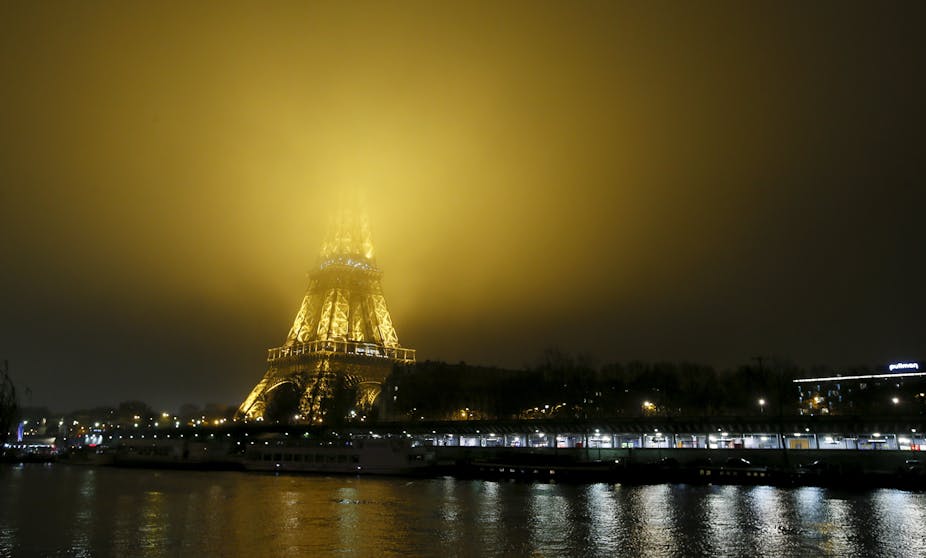The world took a collective sigh of relief in the last days of 2015, when countries came together to adopt the historic Paris agreement on climate change.
The international treaty was a much-needed victory for multilateralism, and surprised many with its more-ambitious-than-expected agreement to pursue efforts to limit global warming to 1.5°C.
The next step in bringing the agreement into effect happens in New York on Friday 22 April, with leaders and dignitaries from more than 150 countries attending a high-level ceremony at the United Nations to officially sign it.
The New York event will be an important barometer of political momentum leading into the implementation phase – one that requires domestic climate policies to be drawn up, as well as further international negotiations.
It comes a week after scientists took a significant step to assist with the process. On April 13 in Nairobi, the Intergovernmental Panel on Climate Change agreed to prepare a special report on the impacts of global warming of 1.5°C above pre-industrial levels. This will provide scientific guidance on the level of ambition and action needed to implement the Paris agreement.

Why the ceremony?
The signing ceremony in New York sets in motion the formal, legal processes required for the Paris Agreement to “enter into force”, so that it can become legally binding under international law.
Although the agreement was adopted on December 12 2015 in Paris, it has not yet entered into force. This will happen automatically 30 days after it has both been ratified by at least 55 countries, and by countries representing at least 55% of global greenhouse gas emissions. Both conditions of this threshold have to be met before the agreement is legally binding.
So, contrary to some concerns after Paris, the world does not have to wait until 2020 for the agreement to enter into force. It could happen as early as this year.
Signing vs ratification
When a country signs the agreement, it is obliged to refrain from acts that would defeat its object and purpose. The next step, ratification, signifies intent to be legally bound by the terms of the treaty.
The decision on timing for ratification by each country will largely be determined by domestic political circumstances and legislative requirements for international agreements.
Those countries that have already completed their domestic processes for international agreements can choose to sign and ratify on the same day in New York.
Who is going to sign and ratify in New York?

It is perhaps no surprise that the countries which are particularly vulnerable to the impacts of climate change and who championed the need for high ambition in Paris will be first out of the gate to ratify in New York.
Thirteen Small Island Developing States (SIDS) from the Caribbean, Indian Ocean and Pacific have signalled their intent to sign and ratify in New York: Barbados, Belize, Fiji, Grenada, Maldives, Marshall Islands, Nauru, Palau, Samoa, Saint Lucia, St Vincent and the Grenadines, the Seychelles and Tuvalu.
While these countries make up about a quarter of the 55 countries needed, they only account for 0.02% of the emissions that count towards the required 55% global emissions total.
Bringing the big emitters on board
China and the United States have recently jointly announced their intentions to sign in New York and to take the necessary domestic steps to formally join the agreement by ratifying it later this year. Given that they make up nearly 40% of the agreed set of global emissions for entry into force, that will go a significant way to meeting the 55% threshold.
We can expect more announcements of intended ratification schedules on 22 April. Canada (1.95%) has signalled its intent to ratify this year and there are early signs for many others. Unfortunately the European Union, long a leader on climate change, seems unlikely to be amongst the first movers due to internal political difficulties, including the intransigence of the Polish government.
The double threshold means that even if all of the SIDS and Least Developed Countries (LDCs) ratified, accounting for more than 75 countries but only around 4% of global emissions, the agreement would not enter into force until countries with a further 51% of global emissions also ratified.
Consequently, many more of the large emitters will need to ratify to ensure that the Paris agreement enters into force. This was a key design feature – it means a small number of major emitters cannot force a binding agreement on the rest of the world, and a large number of smaller countries cannot force a binding agreement on the major emitters.
The 55% threshold was set in order to ensure that it would be hard for a blocking coalition to form – a group of countries whose failure to ratify could ensure that an emissions threshold could not be met in practice. A number much above 60% of global emissions could indeed have led to such a situation.
The countries that appear likely to ratify this year, including China, the USA, Canada, many SIDS and LDCs, members of the Climate Vulnerable Forum along with several Latin American and African countries – around 90 in all – still fall about 5-6% short of the 55% emissions threshold.
It will take one more large emitter, such as the Russian Federation (7.53%), or two such as India (4.10%) and Japan (3.79%) to get the agreement over the line. The intent of these countries is not yet known.
Why is early action important?
The Paris agreement may be ambitious, but it will only be as good as its implementation. That will depend on the political momentum gained in Paris being maintained. Early entry into force for the treaty would be a powerful signal in this direction.
We know from the Climate Action Tracker analyses that the present commitments are far from adequate. If all countries fully implement the national emission reduction targets brought to the climate negotiations last year, we are still on track for temperature increases of around 2.7°C. Worse, we also know that current policies adopted by countries are insufficient to meet these targets and are heading to around 3.6°C of global warming.
With average global annual temperature increase tipping over 1°C above pre-industrial levels for the first time last year, it is clear that action to reduce emissions has never been more urgent.
We are already seeing more evidence this year: increases in the monthly global averages of February and March 2016 far exceeded 1°C, record coral reef bleaching, heatwaves, and unprecedented early melting of the Greenland ice sheet this northern spring.

Early entry into force will unlock the legally binding rights and obligations for parties to the agreement. These go beyond just obligations aimed at delivering emissions reductions through countries’ Nationally Determined Contributions to the critical issues of, for example, adaptation, climate finance, loss and damage, and transparency in reporting on and reviewing action and support.
The events in New York this week symbolise the collective realisation that rapid, transformative action is required to decarbonise the global economy by 2050.
Climate science tells us that action must increase significantly within the next decade if we are to rein in the devastating impacts of climate change, which the most vulnerable countries are already acutely experiencing.
For an up-to-date picture of which countries have ratified the Paris Agreement, see our Ratification Tracker.

